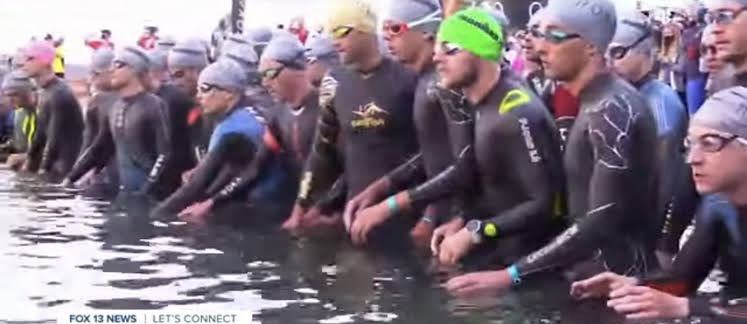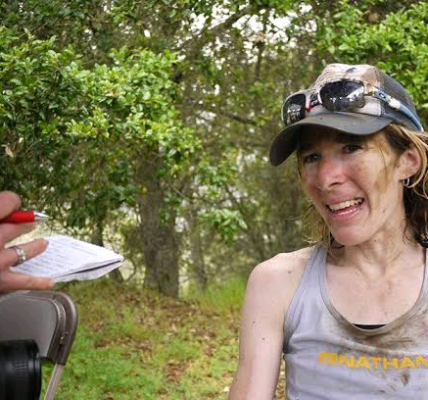The idea of completing a full Ironman—a grueling race comprising a 2.4-mile swim, 112-mile bike ride, and a 26.2-mile marathon—might seem daunting to many. But what if I told you it’s possible to transform your fitness level from completing a mere 5K to conquering an Ironman in just a year? This article outlines my journey, detailing the challenges, training strategies, and mental shifts required to achieve this incredible feat.
### My Starting Point
**Background**
Like many, I started my fitness journey with a goal to get healthier. After a few years of running casually, I participated in my first 5K. The exhilaration of crossing that finish line ignited a passion for endurance sports. I was hooked but didn’t have a clue about the world of triathlons or Ironman events.
**The Turning Point**
It wasn’t until I watched a documentary on Ironman athletes that I realized what I wanted to achieve. The sheer determination and strength of the competitors inspired me. I decided then and there that I would train for a full Ironman within a year.
### Setting the Stage
**Choosing the Right Race**
I began by researching Ironman events and selected one that gave me adequate time to train. I chose Ironman Texas, which was set for a year out. This gave me a timeline and a concrete goal to work towards.
**Finding a Coach**
Recognizing that I needed guidance, I sought out a triathlon coach. A coach provided personalized training plans, advice on nutrition, and accountability—essential elements for success in a grueling race like an Ironman.
### Building the Base
**The Importance of Base Training**
Before diving into Ironman-specific training, I spent the first few months building a strong aerobic base. This involved:
– **Consistent Running**: I gradually increased my running distance from 5K to longer runs, focusing on maintaining a steady pace.
– **Cycling**: I purchased a road bike and began incorporating long rides into my routine, aiming to develop my endurance.
– **Swimming**: Although I had basic swimming skills, I took lessons to refine my technique and build confidence in the water.
**Weekly Training Schedule**
A typical week during my base training included:
– **Monday**: 30-minute swim, focusing on drills.
– **Tuesday**: 5-10 mile run at a comfortable pace.
– **Wednesday**: 1-2 hour bike ride, focusing on building mileage.
– **Thursday**: Rest or light activity (yoga or stretching).
– **Friday**: Interval training (running or cycling).
– **Saturday**: Long bike ride, gradually increasing distance.
– **Sunday**: Long run, working up to 10-12 miles.
### The Transition to Specific Training
**Entering the Build Phase**
After about six months of base training, I transitioned into a more structured Ironman training plan. This phase included:
– **Brick Workouts**: Combining cycling and running sessions to simulate race conditions and improve my transition skills.
– **Long Swim Practices**: Increasing my swim distance and incorporating open water swims to prepare for race day.
– **Nutrition Planning**: Experimenting with energy gels, hydration strategies, and recovery meals to find what worked best for my body.
### The Mental Game
**Developing Mental Toughness**
One of the most significant challenges I faced was mental fortitude. I often struggled with self-doubt during long workouts. To combat this, I practiced visualization techniques, imagining myself crossing the finish line and celebrating my success.
**Community and Support**
Joining a local triathlon club provided camaraderie and support. Training with others not only made long sessions more enjoyable but also created a network of encouragement that kept me motivated.
### Overcoming Obstacles
**Injuries and Setbacks**
Midway through my training, I encountered a minor injury—a strained calf muscle—that set me back a few weeks. This was a crucial moment where I had to reassess my training intensity. I learned to listen to my body, prioritize recovery, and adapt my training plan accordingly.
**Balancing Life and Training**
As my training intensified, juggling work, family commitments, and social life became a challenge. I learned the importance of time management and prioritizing workouts, often training early in the morning or late in the evening.
### The Taper and Race Preparation
**Final Weeks Before the Race**
In the final weeks leading up to Ironman Texas, I entered the taper phase, reducing my training volume to allow my body to recover and be fresh on race day. During this period, I focused on maintaining intensity while lowering the duration of workouts.
**Race Nutrition**
I finalized my race-day nutrition plan, ensuring I had a reliable strategy for hydration and energy throughout the event. I practiced my fueling strategy during long training sessions to make sure my body was accustomed to it.
### Race Day
**The Atmosphere**
Race day arrived, filled with excitement and nerves. The atmosphere at the Ironman was electric, with thousands of athletes and spectators. As I stood at the start line, I reminded myself of all the hard work and dedication that had brought me to this moment.
**The Swim**
The swim was both exhilarating and challenging. Despite feeling overwhelmed initially, I found my rhythm and completed the 2.4-mile swim in about 1 hour and 20 minutes.
**The Bike**
Transitioning to the bike leg, I focused on pacing myself for the 112-mile ride. The energy from the crowd and my fellow competitors kept me motivated. I maintained a steady effort and managed to complete the bike segment in approximately 6 hours.
**The Marathon**
As I transitioned to the marathon, my legs felt heavy, but I was determined. I employed a run/walk strategy, breaking the 26.2 miles into manageable segments. The support from volunteers and spectators fueled my determination, and crossing the finish line after 12 hours and 45 minutes was a moment of pure elation.
### Conclusion
Completing a full Ironman in just a year after starting with a 5K was one of the most challenging yet rewarding experiences of my life. This journey taught me about resilience, dedication, and the importance of community. For anyone considering a similar path, remember that it’s not just about the destination; the process of becoming stronger, both physically and mentally, is equally transformative. With the right mindset, training, and support, you can achieve remarkable feats—one stroke, pedal, and step at a time.




